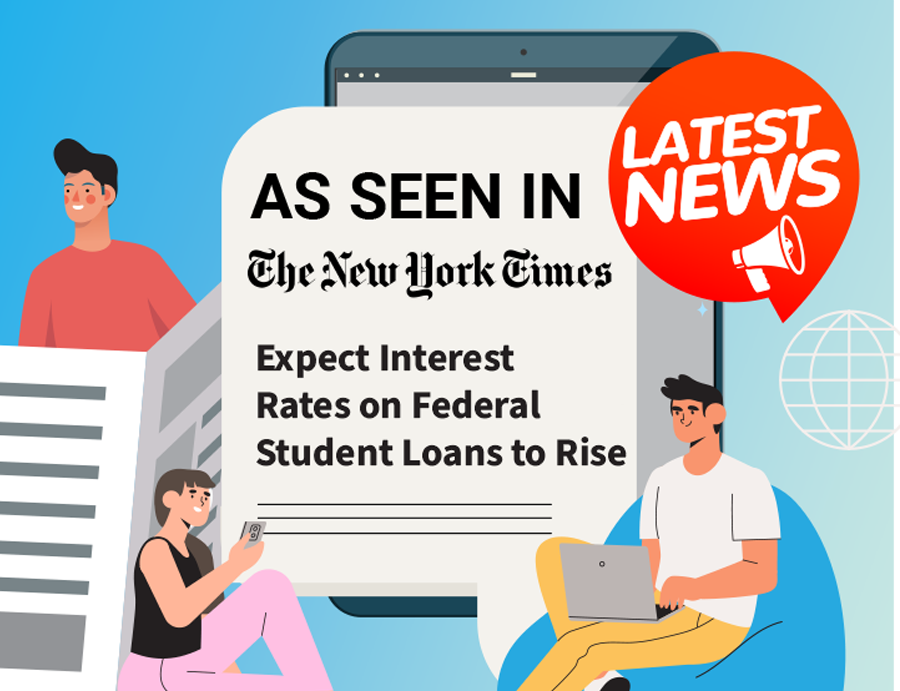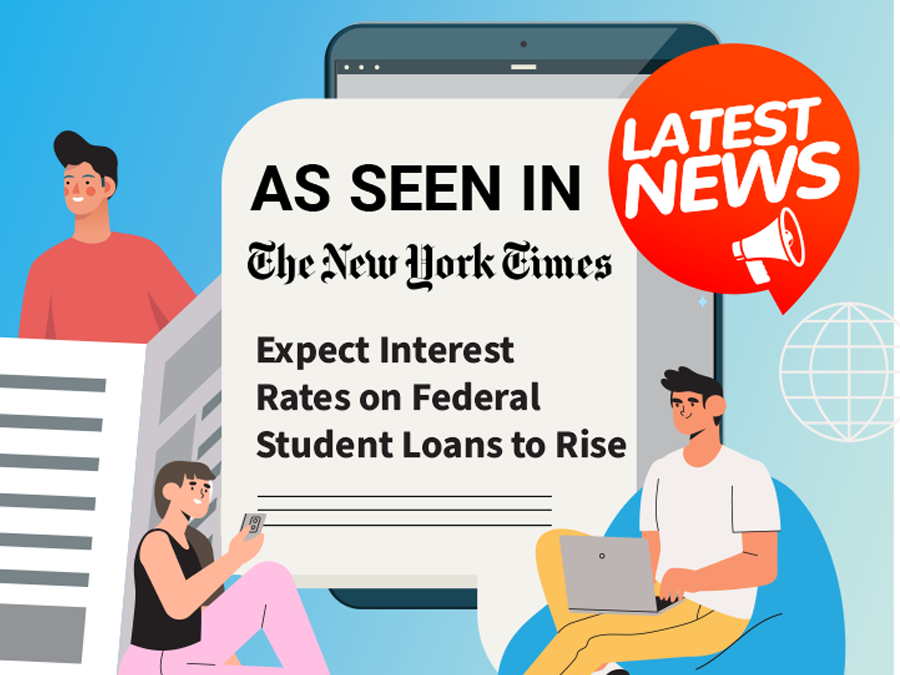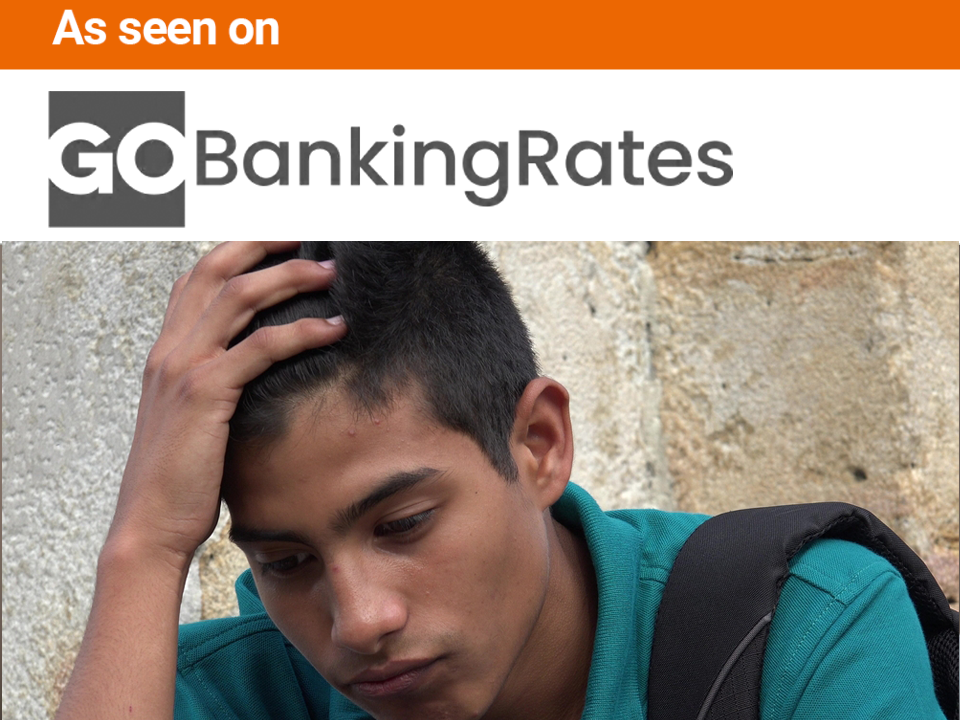
How to Pick the Right College for You
April 16, 2023
College Money Matters November 2023 Newsletter
November 6, 2023Expect Interest Rates on Federal Student Loans to Rise

Interest rates on new federal student loans are expected to exceed 5 percent for the first time in five years, adding to the pressure on families already struggling to pay for college.
Rates for undergraduate student loans for the coming academic year are expected to rise to nearly 5.50 percent, from 4.99 percent. Just three years ago, rates were below 3 percent.
Rates on other types of federal education loans will probably rise as well. Loans for graduate students are likely to increase to about 7.05 percent, from 6.54 percent, while rates for PLUS loans, available to parents who need extra financing for their children as well as to graduate students, will probably increase to about 8.05 percent, from 7.54 percent.
The new rates will apply to loans made July 1 through June 2024. Rates stay fixed for the life of a federal student loan, but new loans are priced each July, based on the 10-year Treasury bond auction in May. (The Education Department hasn’t announced the rates, but Mark Kantrowitz, a financial-aid expert, calculated them using the government’s formula.) The rates are influenced by the Federal Reserve, which has been aggressively raising interest rates in an attempt to cool inflation.
Still, the impact on payments for undergraduates is relatively modest — an addition of about $2 a month on a $5,500 loan (the first-year maximum borrowing amount), with a standard 10-year repayment term.
But Persis Yu, deputy executive director of the Student Borrower Protection Center, said the “eye-popping” rate on PLUS loans, in particular, was worrisome because rates had already become unaffordable for many borrowers. “It raises the broader question of how much we are relying on debt to fund higher education,” she said.
PLUS loans are available to parents for up to the total cost of attending college. Credit checks for borrowers are cursory.
The average estimated cost of attending a four-year public college for an in-state student for the 2022-23 school year was $27,940, while the cost at a four-year, private nonprofit college was $57,570, according to the College Board, a nonprofit that administers the SAT and Advanced Placement courses.
Grants and scholarships can lower those totals. But for many families with limited incomes, borrowing is the only way of paying for their children to go to college. “There’s too big of a gap,” Ms. Yu said. While it’s wise to borrow only as much as you need, it’s important to make sure you don’t leave yourself short of funds, said Abby Shafroth, senior attorney at the National Consumer Law Center.
“There are risks to under-borrowing, too,” she said. If you have to work more during the school year to cover costs, you may have less time for your studies. That could put you at risk of taking longer to graduate — which costs more — or even dropping out.
Nancy Goodman, founder of College Money Matters, a nonprofit that aims to inform students and families about paying for college, said the higher rates should make you think twice about taking out a loan. Use an online loan calculator to do the math, she said, to see how much you would pay monthly for the amount you need to borrow to attend a given school.
She suggested considering less expensive state colleges, and making sure to graduate in four years to help keep costs down. Taking Advanced Placement or college-level classes while in high school may help you earn college credit. Graduating a semester early can save as much as $6,000, she said.
Ms. Goodman said a good rule of thumb is: Don’t borrow more in student loans over the four years of college than you expect to earn in your first year’s salary as a professional. While it can be hard to determine that number, you can get a rough idea of what workers in various occupations earn from data on the Department of Labor website. Your choice of major also affects your eventual pay and how much debt you can expect to pay off after graduation, said Michael Itzkowitz, founder and president of the HEA Group, a consulting firm focused on college access and success.
Some majors are more likely to result in higher salaries, Mr. Itzkowitz said. The group published a spreadsheet on Thursday, based on April data from the Department of Education’s College Scorecard, of the average salaries for the most popular majors, as well as the highest-paying majors, four years after graduation. The top salaries — $90,000 and higher — are concentrated in majors like petroleum or computer engineering, computer science and pharmacy, while salaries in fields like the fine arts, studio arts, dance and theater are in the low- to mid-$30,000 range.
“Everyone needs to consider the cost of attendance in addition to what their potential salary might be,” Mr. Itzkowitz said. “Can you recoup your costs within a reasonable amount of time?”
Here are some questions and answers about student loans:
Is there a limit to how much I can borrow for college?
For federal student loans, the limit for dependent students is generally $5,500 for the first year, $6,500 for the second year and $7,500 for the third and fourth years. The cumulative cap, which accounts for extra years if needed, is $31,000. (Borrowing limits are higher for independent and graduate students.) For PLUS loans, the limit is as high as the institution’s cost of attendance.
Are rates rising for private student loans?
Private student loans are offered by banks and lenders other than the federal government, and their rates, which vary by lender, have also been rising. The loans typically require a credit check, and only borrowers with top-notch credit get the lowest advertised rates. Private loans may also have variable interest rates, which means your monthly payment can increase over time as rates rise. Advocates for student borrowers urge caution with private loans because they tend to be more expensive and lack the protections of federal loans, like payment plans adjusted to your income and the right to temporarily suspend payment in the event of setbacks like a job loss or illness. Also, federal borrowers who work in certain government and nonprofit jobs may qualify to have their debt forgiven after a period of time.
When does the pause on federal student loan payments end? Payments on most federal student loans have been paused for the past three years because of the pandemic. But borrowers may be required to start repayment late this summer or early fall, according to guidance from the Federal Student Aid office.
Borrowers should be on the lookout for updates from the Education Department or their loan servicers, said Betsy Mayotte, founder of the Institute of Student Loan Advisors, a nonprofit group. She suggested that borrowers check what their monthly payments will be once payments resume. (To do so, look on www.studentaid.gov). If the amount is too high, they can use the department’s online calculator to see if a different payment plan may be available.
Borrowers should also make sure their servicer has their correct contact information, she said. Open all correspondence promptly. “With all the moving parts and changes in the works with student loans right now,” she said, “it’s even more important for borrowers to ensure they are up to date on what their responsibilities are.”




